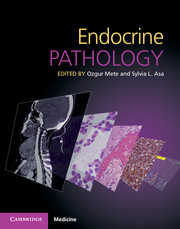Book contents
- Endocrine Pathology
- Endocrine Pathology
- Copyright page
- Contents
- Acknowledgements
- Contributors
- Preface
- Section I Clinical approaches
- Chapter 1 Clinical presentations of endocrine diseases
- Chapter 2 Familial endocrine tumor syndromes
- Chapter 3 Immunological basis of endocrine diseases
- Section II Investigative techniques
- Section III Anatomical endocrine pathology
- Index
- References
Chapter 2 - Familial endocrine tumor syndromes
from Section I - Clinical approaches
Published online by Cambridge University Press: 13 April 2017
- Endocrine Pathology
- Endocrine Pathology
- Copyright page
- Contents
- Acknowledgements
- Contributors
- Preface
- Section I Clinical approaches
- Chapter 1 Clinical presentations of endocrine diseases
- Chapter 2 Familial endocrine tumor syndromes
- Chapter 3 Immunological basis of endocrine diseases
- Section II Investigative techniques
- Section III Anatomical endocrine pathology
- Index
- References
- Type
- Chapter
- Information
- Endocrine Pathology , pp. 56 - 70Publisher: Cambridge University PressPrint publication year: 2000



